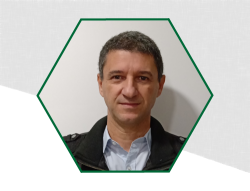This study examines the impact of wobble movement on a LASER beam's behavior while moving over an AISI 316L stainless steel sample of 1.2 mm thickness. The LASER beam oscillatory movement is superimposed on linear movement using a 400 W fiber LASER installed on an experimental bench equipped with a scanner and worktable. Mathematical modeling estimates instantaneous beam speed values, predicting thermal influence on weld bead aspects. Micro-welding experiments use autogenous modeling with lateral beam oscillation. Two forms of overlapping transverse wobble are tested: one with a circular path and the other describing a path like the mathematical symbol “infinity.” Correlations are evidenced between the parameters used and results obtained in the micro-welds, including penetration and width of the beads. Results show that the frequency of movement in a circle and in “infinity” for frequencies from 200 to 400 Hz has no significant influence on the result. Increasing the amplitude of the wobble movement from 0.5 to 2 mm significantly influences the width and depth of the strands generated. The wobble technique is effective in preventing discontinuities in the process such as porosity. A bead obtained with 300 W, 50 mm/s, 0.5 mm overlapping wobble movement, and 300 Hz circular rotation frequency showed the highest relationship between width and depth.
Keywords
- Beam Oscillation
- Laser Micro-Welding
- Wobble

